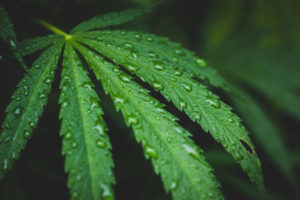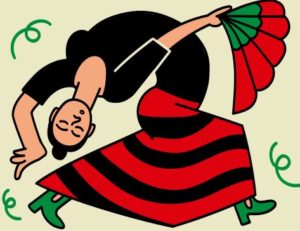When people think of easy access to cannabis in Europe, one of the first places that comes to mind is Amsterdam. Amsterdam has gained a reputation as a sort of Disneyland for cannabis consumers for several decades. This reputation, whether slightly exaggerated, is not completely unearned.
Here you can find licensed coffee shops, which are allowed to sell 5g of cannabis with a variety of options for curious customers.
Although visitors to Europe may first think of Amsterdam when asked about “cannabis tourism,” Spain has quietly taken a noteworthy position in European cannabis culture. With the first cannabis social club created in 2001, Spain now has an estimated 800 clubs, with several hundred of those thriving in Barcelona alone.

With this enormous growth in cannabis acceptance since the early 2000s, it’s important to note that cannabis consumption in Spain is not the same as in the United States or Amsterdam, where it maintains a more clear legal path.
To be clear, trafficking, selling, or carrying cannabis in Spain is a crime. Smoking or having it out in a public setting can cost you a fine of 600€ to 10,000€ ($800 to $12,000) and you may be subject to jail time. The personal use of marijuana, however, has been decriminalized. You can legally smoke in private residences and private cannabis clubs without fear of reprisal from the authorities. These clubs in Spain are officially classified as non-profit associations, where they are permitted to grow cannabis and sell it at cost to its members.
The Risks In Seeking Relief
Take a stroll through Parc de la Ciutadella in Barcelona and you may catch the slight scent of marijana blowing between the swaying trees and monuments. Walk a bit further to watch the sunset over the ocean on Barceloneta Beach and someone may ask you if you’d be interested in joining a club.
You may be lulled into thinking there is no longer a battle for the acceptance of accessible marijuana but there are still some major hurdles. Vice recently highlighted the story of Fernanda de la Figuera, known as one of the first woman to legally cultivate the plant in Spain.
Vice reported that Spanish police seized 10kg of marijana from Fernanda’s home. As part of her “Marias x Maria” cannabis association, she procured enough for the 100 plus people who are in need of cannabis for medical purposes. She claims to provide a better alternative for people who would otherwise not be able to access it and may be forced to resort to the black market.
When asked how life would be without cannabis, Fernanda replied “I probably would’ve lost my sense of humour. I’ve been through bad times, and I’d definitely be dependent on whatever opioid my doctor prescribed to deal with the pain because they are extremely addictive. Cannabis, on the other hand, is not so addictive.”
Seeking Alternatives To Opioids
Despite its legality issues, the number of research teams looking into cannabis continues to grow immensely in Spain. A reported 16 million people have tried cannabis across Spain and the industry continues to grow not just in Spain but around the world. As a therapeutic resource, a number of experts have spoken out on the importance of having cannabis be accessible and legal to the general public.
Manuel Guzmán, professor of Biochemistry at the Madrid Complutense University and a leading expert on cannabis, spoke to EL PAÍS about the risk of inhibiting access to safer pain relief alternatives such as cannabis:
The person who gets it on the black market and doesn’t know what they are consuming is taking a big risk. I mean patients – the 120,000 people in Spain with multiple sclerosis, epilepsy, cancer and chronic pain that self dose, not to mention the thousands who would like to do so. They need the best but they are being denied it while prescriptions for opioids, which kill, are being handed out.
The cannabis community, unfortunately, shares strong parallels with other natural remedies that governments around the world have sought to regulate or restrict. Michael Napolitano, an army veteran in the United States, was suffering from PTSD and anxiety and found another alternative to opiods. “I started using kratom about August of 2018,” he said. “I was using prescription pain meds, then I couldn’t get my prescription pain meds, so I was using street drugs. I was snorting heroin.”
Like cannabis, kratom has been subject to many of the same regulatory and legality issues in countries around the world. There are millions of people like Michael Napolitano and Fernanda de la Figuera who simply seek natural remedies and run into governmental agencies seeking to prohibit its availability and move people towards toxic alternatives. Napolitano continued to share his thoughts with Kratom Science:
They poison people’s minds about it. Let me tell you, I would take it [kratom] over anything that big pharma has to offer. I don’t care what it is, Oxys or whatever. Whatever they got, I’m not buying it. I’m not taking it. I’m in that category where, kratom is it. If I need medicine, that’s my medicine. Bottom line.
Napolitano regards kratom as a “miracle plant”, that helped him get clean from opiates, gives him energy, and allows him to deal with his PTSD and anxiety.
As any natural remedy grows in popularity, governments begin to pay attention. It is said that Spain’s nonchalant approach to cannabis tourism is grabbing the attention of policing authorities. There is now a fight in Spain for the full legalization of cannabis, a movement that aims to better protect the health and safety of cannabis users. With cannabis being the most widely used “illegal” drug in Spain, why does the government continue to resist the full legalization of yet another safe, natural plant?




Thanks for sharing good content related kartom. keep good work.